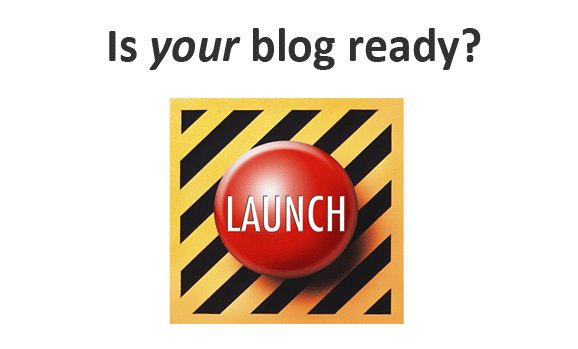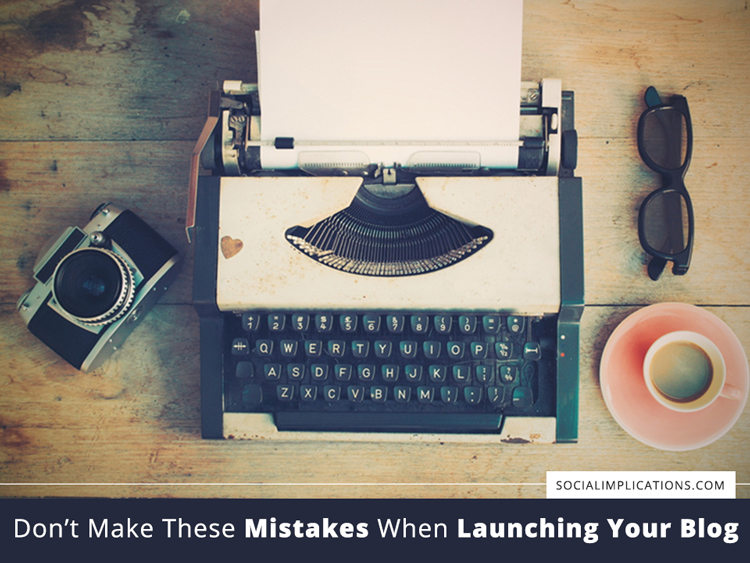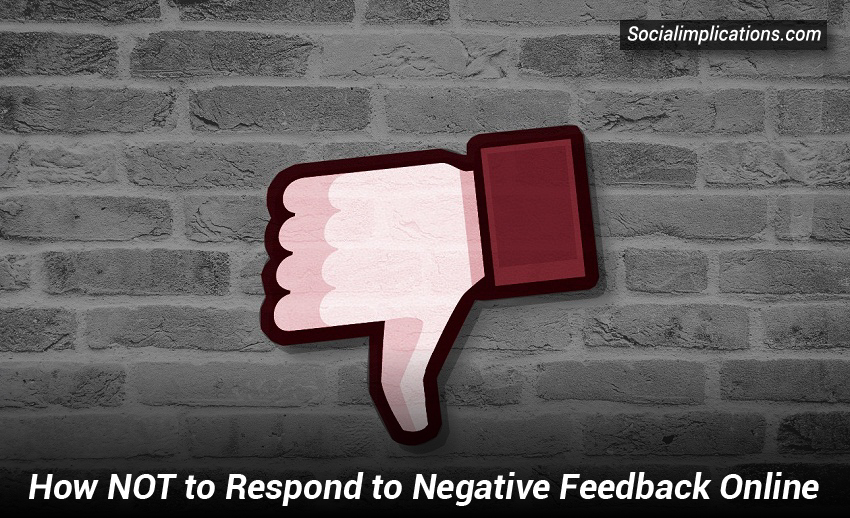
If you’re thinking about launching a new blog, there’s more to it than just slapping some content up and saying “Hello world, I’ve arrived!” That said, a blog launch doesn’t have to take a long time either. You just have to think things through and be prepared for the different types of work involved. I hope I can help you do that.
Here are 20 tips that can help you experience a more successful blog launch, taken from my own experience of launching more than two dozen blogs over the years. I hope you find some of the tips useful in your own blog launch (note that some of these references are specific to WordPress bloggers).
Design / Branding

1. Choose a domain name that is easy to remember and that will resonate with your target audience. Do the same with your slogan.
2. Then create your logo based on your site name (and sometimes slogan as well). This should ideally also be memorable given that it’s one of the first things your visitors will see. Precious little screams “amateur” like visiting a new blog and seeing a default text-based header no one put any thought or time into.
3. Choose a theme to use or customize, or find a designer to create a custom theme for you. While free themes might be tempting, it’s better only to use them if you can heavily customize them. Your design becomes a part of your brand, and it can influence the image the blog portrays to visitors. Give them a good first impression.
4. Make sure your navigation is, well, easy to navigate. One of the biggest turn-offs for me as a reader is not being able to find links to your categories, archives, or your About page to learn more about you and the blog. Make sure your subscription links are easy to find too.
5. Think about features and design elements you want that aren’t built into your blog theme already. Find and install plugins that let you add them — related posts, Twitter subscription buttons or feeds, etc.
Content
1. Create a blog content plan including categories, post ideas for coming months, and a post schedule so you can worry less about coming up with new ideas early on and more time on other aspects of the blog launch.
2. Skip the “welcome” post and get right into the meat of the blog with a capstone piece of content that will attract readers, subscribers, and backlinks from the get-go (more important in a niche blog than a personal blog). Also, try to have three to five posts up already by launch day — not just one. If people like your first post, they’ll want to get their hands on more immediately.
3. Write and pre-schedule at least a few weeks’ worth of posts before your launch date so you have new content going up no matter how busy you are with early blog promotion. You can also write some extra articles early on for use later as guest posts on others’ blogs.
4. Contact noteworthy people in your niche or industry and get them to sign on for a series of interviews — fresh content for you, interesting material for your readers, promotion for the interviewee. This is an especially useful tactic if you’re not an authority source in the niche yourself yet.
5. Set up your non-post pages of content carefully — your detailed About page explaining what the blog is going to cover and who you are, a contact page so people can reach you, sidebar or additional homepage copy, etc.
SEO

1. Change your permalink structure to make them search engine friendly (include the post name for example rather than just the post number).
2. Install an SEO plugin (like the All-In-One SEO Pack for WordPress blogs). These will let you add site, post, and page meta details that can help you rank higher in search engine results. Do some basic keyword research before choosing keyword phrases to emphasize here.
3. Install an analytics program that will let you see what search terms drive traffic to your site (so you know which ones need more of your time and attention because they’re not bringing in enough traffic as you move forward).
4. If you own other blogs and websites that are somewhat relevant to your new blog launch, use cross-promotion to build some initial backlinks.
5. Remember those extra articles you wrote earlier? Start submitting them to other relevant blogs as potential guest posts for the backlinks (guest posts are for much more than SEO, but there’s no denying the credit links can help out a new blog). You can also comment on others’ blogs in the niche with a link to your new blog when appropriate — don’t spam. Not all will be do-follow links, but even no-follow links have value if they drive visitors who like your content enough to link to it themselves elsewhere.
Promotion
1. Get setup with social media. Start a Twitter account tied to your blog. Launch a Facebook or LinkedIn profile if they’re relevant to your niche and type of blog. Start building a well-rounded social media presence (but don’t feel like you have to use every social media tool).
2. Make your content easy to share. Add a plugin like Digg Digg or Tweet This or Sociable so readers can quickly share your content within their own networks online.
3. If there’s something newsworthy about your blog launch (you or your company are already extremely well-known, it’s completely new in some way, there’s some other event tied to the launch, etc.), issue a news release online.
4. Put emphasis on subscriptions. Offer a nice big RSS button that can’t be missed. Offer special perks for subscribers (like exclusive content). Give people an easy way to subscribe not only to posts through a feed reader but also via email, and make it easy to subscribe to comments too (either via RSS for the whole blog or via email for comments on specific posts using a plugin like Subscribe to Comments).
5. Consider a contest. Launch contests can bring in a nice flow of initial visitors and links as people spread the word. The bigger the better, but if you can’t afford much see what you can come up with anyway — a gift card, a signed copy of a book in the niche donated by an author you know, free services you offer outside of your blogging work, etc.
By no means is this an exhaustive list of everything you could (or even should) do when launching a blog. These are tips to help you have a more successful blog launch experience. Do you have any other tips you’d like to share with new bloggers — things you don’t think they should forget? Leave a comment below and tell us about it.














Hello Jennifer Mattern good tips!! thanks.
In facebook-> My Blog Guest -> Social Implications.
Good day.
Thanks for the motivation! Before I found your post, I’d never even considered promoting a new blog with a launch like this. Hopefully I can put a few of these tips to good use in the coming days!
Glad you found the tips useful Beth. 🙂 I’m a big fan of pre-launch promotion to get new sites off to a good start. That’s obviously very different if you have your own sites (in related niches) you can use as a springboard versus launching your first blog (or at least the first in a specific niche). Out of curiosity, what kind of blog do you plan to launch since you mention you might be able to put the tips to use in coming days?
DEFINITELY agree that it’s a great idea to schedule a few posts in advance. When I worked in design I made it a requirement that clients write a minimum of 5 blog posts before we published the final design. I saw it as practicing a good habit from the start. Because at the end of the day, if you want to be successful, you need to be consistent. Period.
At the moment I have five sites being prepared for launch, and really it’s the pre-posting that’s holding back launch dates. It’s time-consuming, especially when you’re focused on that flagship-style content that will set the tone for the blog moving forward. But it’s so worth it. I made the mistake of launching more than my fair share of sites with a simple “welcome” post. There’s no quicker way to lose potentially new readers.
You don’t want someone visiting a new site that you’ve been building buzz for only to have them ask “um, where’s the content?” I think unfortunately we still sometimes put blogs on a different level than traditional sites. But we need to think of them as more of the same. After all, would you launch a business site without marketing copy? Probably not. Then don’t launch a blog without it’s “meat” either. Seems simple. But sometimes the excitement of making a launch official takes over. It’s all about restraint and hard work.
Glad to hear you were one of the good ones, making sure clients were set on content before tossing a design up. I’ve seen my share of the opposite who just want the design up and project finished. It’s nice to see folks who really care about the client’s best interest. 🙂
This is a helpful overview. How important really is a unique logo? Does the logo HAVE to a full expression of the theme or simply related to it?
Thanks,
Brian
I’m not sure what you mean by “a full expression of the theme.” But in general, I would say a unique logo is important. It should be something that’s trademarked once it’s created (although that will vary depending on where you live), and that means others can’t create overly similar sites and use an extremely similar logo to try to capitalize on the goodwill toward your brand. And you obviously should never use a non-unique logo in the sense that you’re adapting someone else’s logo to capitalize on their branding.
That said, I don’t think you need to go with something “unique” in a visual sense. Sometimes the right typography for your business name is enough (think of the Gap logo and the fiasco when they tried to change it — simple is sometimes best). Memorable is good, but I’d say visually that’s less necessary for blogs than it is for products where the logo might grab a buyer’s attention or make the sale (like teens who will only wear certain name brand clothing). With a blog I’d shoot for a memorable name first and foremost. It’s the name and domain they’ll remember when they want to visit your site.